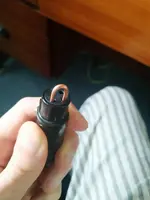A
AntonTeplyy
Member
Hi, friends!
I am a beginner in voice over, not an expert at all.
So, I have Zoom H6 and Deity S-Mic 2 for my work. I bought the last one, because I saw several youtube videos where it was compared to Sennheiser MKH 416. I also wanted something portable and durable, since I often move from one country to another. In all these videos the level of self-noise of Deity S-Mic 2 was similar to MKH 416 (or at least people said this)
Now I record at the gain level 6 at Zoom, pretty close to mic, but still there is a lot of self-noise. I expected this mic to be almost silent, since everyone spoke about this. In post production I have to use DeNoiser to get rid of this noise, which affects negatively the recording.
So, my doubts are:
Is it the preamps of Zoom that are guilty of this self-noise or is it mic itself?
Does anyone have a chance to compare these 2 mics? Do they really have the same level of self-noise? I want to buy Sennheiser MKH 416 in the future, but if it is going to be the same thing, there is no reason (I am pretty happy with the performance of Deity expect for the self-noise).
If I buy Neumann TLM103 in the future, will I run into the same problem with the self-noise? This mic has the lowest self-noise posible, but will it work well with Zoom H6?
If my problem are the preamps of Zoom H6, which audio interface would you recommend me? (not very expensive, please). It would be great if it portable and will work well with Neumann TLM103.
If I buy an audio interface, would I be able to use it with my Asus Transformer Book T100 on Windows? This is the only fanless laptop that I have.
Many thanks in advance! Sorry for so many questions!
I am a beginner in voice over, not an expert at all.
So, I have Zoom H6 and Deity S-Mic 2 for my work. I bought the last one, because I saw several youtube videos where it was compared to Sennheiser MKH 416. I also wanted something portable and durable, since I often move from one country to another. In all these videos the level of self-noise of Deity S-Mic 2 was similar to MKH 416 (or at least people said this)
Now I record at the gain level 6 at Zoom, pretty close to mic, but still there is a lot of self-noise. I expected this mic to be almost silent, since everyone spoke about this. In post production I have to use DeNoiser to get rid of this noise, which affects negatively the recording.
So, my doubts are:
Is it the preamps of Zoom that are guilty of this self-noise or is it mic itself?
Does anyone have a chance to compare these 2 mics? Do they really have the same level of self-noise? I want to buy Sennheiser MKH 416 in the future, but if it is going to be the same thing, there is no reason (I am pretty happy with the performance of Deity expect for the self-noise).
If I buy Neumann TLM103 in the future, will I run into the same problem with the self-noise? This mic has the lowest self-noise posible, but will it work well with Zoom H6?
If my problem are the preamps of Zoom H6, which audio interface would you recommend me? (not very expensive, please). It would be great if it portable and will work well with Neumann TLM103.
If I buy an audio interface, would I be able to use it with my Asus Transformer Book T100 on Windows? This is the only fanless laptop that I have.
Many thanks in advance! Sorry for so many questions!


 . I.e., you need the preamp to see some resistance, but no amplitude.
. I.e., you need the preamp to see some resistance, but no amplitude.
